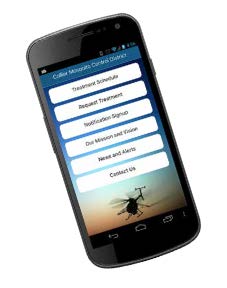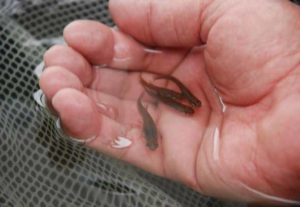Three tips to protect yourself when mosquito season is in full swing

Patrick Linn, MS, MSHAPI
Executive Director, Collier Mosquito Control District
Most Collier County residents will attest that our rainy summer months not only bring about much needed replenishment to our water levels, but they also increase local mosquito populations and the likelihood of experiencing their bites.
The District’s treatment missions either target mosquito larvae in standing water or the flying and feeding adults. While a larvicide treatment can effectively kill their larvae for up to 30 days, the adulticiding treatments have no residual effect and only knock down the adults present at the time of treatment. In this article, we present a few tips to help protect yourself and deal with the pesky bugs between treatments.
Mosquito problems? We have an app for that!
Communication with our residents plays an important role in our daily surveillance data. Whether via a phone call or a submission through our website or mobile application, residents’ reports are entered into our Operations data to determine where the highest numbers of mosquitoes are occurring.
via a phone call or a submission through our website or mobile application, residents’ reports are entered into our Operations data to determine where the highest numbers of mosquitoes are occurring.
The three ways to report nuisance mosquitoes are:
– Submit a service request through our mobile application
– Complete a service request form on our website (www.cmcd.org)
– Telephone us at (239) 436.1000
The District’s mobile application is available through both the App Store and Google Play by searching for “Collier Mosquito.” In addition to service requests, the app displays treatment schedules and includes a sign-up form to receive treatment notifications.
We have fish for your standing water
 Mosquitoes need only a tiny amount of standing water in which to lay their eggs. And remember that mosquitoes aren’t just a nuisance – they can also spread disease such as chikungunya, dengue, yellow fever, Zika and West Nile. This year, the District is increasing the availability of a biological control method to “fight the bite.”
Mosquitoes need only a tiny amount of standing water in which to lay their eggs. And remember that mosquitoes aren’t just a nuisance – they can also spread disease such as chikungunya, dengue, yellow fever, Zika and West Nile. This year, the District is increasing the availability of a biological control method to “fight the bite.”
Native to Southwest Florida, mosquitofish (Gambusia holbrooki) can consume large quantities of mosquito larvae daily. They are a small but hearty freshwater fish in the guppy family, but don’t let their small size fool you! As soon as they are introduced to their new home, they will instantly go to work to gobble up larvae, interrupting the mosquitoes’ life cycle.
The District has two 800 gallon tanks of mosquitofish on our campus, and they are free to the public to place in water filled locations on their property where mosquitoes may be breeding. Residents need to call our office in advance to schedule a time for the pick up; a member of our science team will be able to determine the number of fish needed on the property after a brief conversation.
Protect yourself with the “5 Ds”
Prevention is the ultimate key when it comes to avoiding mosquito bites. That’s why the District always reminds resident to follow the “5 Ds” of mosquito control:
• DRAIN – dump standing water from any container on your property to reduce mosquito breeding habitat. Just one
bottlecap of still water can produce about 100 mosquitoes in one week!
• DEFEND – when used as directed, these Environmental Protection Agency recommended repellents are proven safe and effective:
– DEET
– Picaridin
– Oil of lemon eucalyptus
– IR3535
• DUSK & DAWN – avoid outdoor activities during these times when mosquitoes are most actively flying and feeding
• DRESS – cover exposed skin (weather permitting) to block mosquitoes’ access to your skin
 To learn more about the District’s operations, public tours are available. Included are presentations by our research team in the laboratory, our operations/surveillance team, and a visit to the hangar.
To learn more about the District’s operations, public tours are available. Included are presentations by our research team in the laboratory, our operations/surveillance team, and a visit to the hangar.
We also make arrangements for staff to conduct presentations at group meetings. Please call our office at (239) 436-1000 to schedule a tour or if we can provide more information.



Leave a Reply
Want to join the discussion?Feel free to contribute!